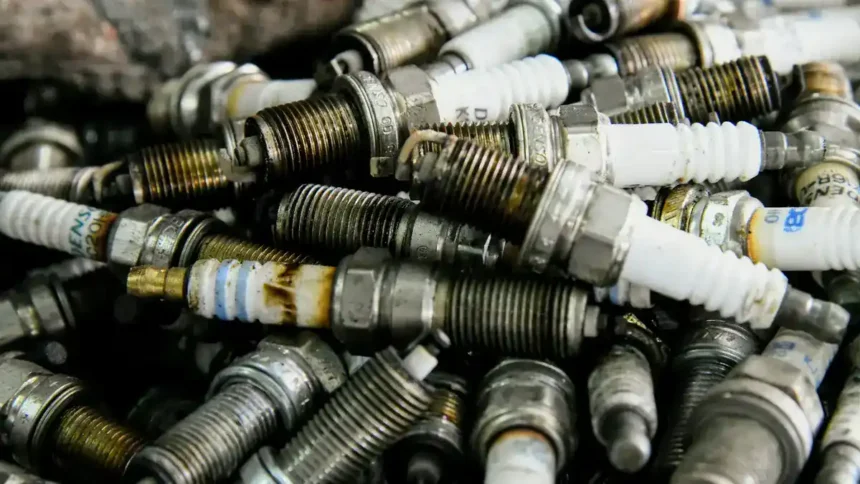Over time, your car’s spark plugs wear out, and when they do, they can cause your engine to misfire, lower fuel efficiency, and even lead to engine damage if ignored. Replacing your car’s spark plugs is a key part of routine car maintenance that can dramatically improve your engine’s performance and longevity. Fortunately, with the right tools and a little know-how, changing spark plugs is a relatively simple task you can do at home. This guide will take you through the process of replacing spark plugs, covering everything from the tools you need to step-by-step instructions.
Understanding the Role of Spark Plugs
Spark plugs are small but essential components in your engine’s ignition system. Their primary job is to create the spark needed to ignite the air-fuel mixture in your engine’s cylinders. This controlled explosion powers your engine, allowing your car to run smoothly. However, worn or damaged spark plugs can lead to reduced power, poor fuel efficiency, and even hard starts.
Regularly replacing spark plugs as part of your car maintenance routine helps ensure your engine operates efficiently and reliably. But when should you replace them?
- When to Replace Spark Plugs: Most manufacturers recommend replacing spark plugs every 30,000 to 50,000 miles, but this can vary depending on the type of spark plugs and your car’s make and model. If you notice sluggish acceleration, poor fuel economy, or engine misfires, it may be time to replace them sooner.
Tools You’ll Need to Replace Spark Plugs
Before getting started, gather all the necessary tools to make the job smoother:
- Spark plug socket (usually 5/8” or 13/16” depending on your car)
- Ratchet wrench
- Spark plug gap tool
- Torque wrench (optional, but recommended)
- Anti-seize compound (optional)
- Dielectric grease (optional)
- New spark plugs (ensure they’re compatible with your vehicle)
How to Replace Your Car’s Spark Plugs: A Step-by-Step Guide

Now that you understand the importance of spark plugs, let’s get into the actual process of replacing them. Follow this guide carefully, and you’ll have your car running like new in no time.
1. Prepare Your Vehicle
Before starting, ensure your car is parked on a level surface and that the engine is cool. Working with a hot engine can lead to burns and make it difficult to remove the spark plugs.
- Safety Tip: Always disconnect the negative terminal of your car’s battery to avoid any electrical hazards.
2. Locate the Spark Plugs
Your vehicle’s spark plugs are located in the engine block, typically under the ignition coils or spark plug wires. In most cars, they’re relatively easy to access, but in some cases, they may be covered by components that need to be removed first.
- Pro Tip: Refer to your vehicle’s manual for the exact location of the spark plugs and any instructions on accessing them.
3. Remove the Ignition Coils or Spark Plug Wires
If your car has ignition coils, carefully remove them by disconnecting the electrical connector and unscrewing the coil. For older vehicles with spark plug wires, simply pull the boot off the spark plug by grasping it near the base and twisting gently.
- Tip: Label each wire or coil if you need to, so you can reconnect them in the correct order.
4. Remove the Old Spark Plugs
Use your spark plug socket and ratchet wrench to carefully unscrew the old spark plugs. Turn counterclockwise until the spark plug comes free.
- Important: Be careful not to apply too much force, as spark plugs are delicate and can break if handled roughly.
| Common Issues When Removing Spark Plugs | Solutions |
|---|---|
| Spark plug is stuck or difficult to remove | Use a penetrating lubricant to loosen it, then try again after a few minutes. |
| Broken spark plug | Use a special extractor tool if needed, or consult a mechanic. |
5. Inspect the Old Spark Plugs
Once removed, take a moment to inspect the old spark plugs. This can give you insight into the health of your engine. Here’s what to look for:
- Normal Wear: Light brown or grayish-tan deposits are normal.
- Oil Fouling: If the spark plug is covered in oil, there may be an issue with your engine’s seals or valves.
- Carbon Build-up: Black soot can indicate an overly rich fuel mixture.
6. Gap the New Spark Plugs
Before installing the new spark plugs, use a spark plug gap tool to ensure the gap between the electrodes is correct. The gap determines how well the spark plug ignites the fuel mixture.
- Correct Gap: Refer to your car’s manual for the specific gap size for your spark plugs. Adjust the gap carefully if needed.
7. Install the New Spark Plugs
Carefully thread the new spark plugs into the cylinder by hand to avoid cross-threading. Once they’re hand-tight, use your spark plug socket and ratchet to tighten them snugly.
- Tip: If you’re using a torque wrench, refer to your vehicle’s specifications for the correct torque setting. Overtightening can damage the spark plugs or the engine threads.
8. Apply Anti-Seize Compound and Dielectric Grease (Optional)
Some mechanics recommend applying a small amount of anti-seize compound to the spark plug threads to prevent them from sticking during future replacements. Additionally, you can apply dielectric grease to the inside of the spark plug boots to improve the connection and protect against moisture.
9. Reattach the Ignition Coils or Spark Plug Wires
Once the new spark plugs are securely installed, reconnect the ignition coils or spark plug wires. Make sure they’re seated firmly and in the correct order.
10. Test Your Car
With everything reconnected, start your car and let it run for a few minutes. Listen for any unusual sounds or vibrations that may indicate a problem. If the engine runs smoothly, you’ve successfully replaced your spark plugs!
FAQs About Replacing Spark Plugs
Q1: How often should I replace my car’s spark plugs?
A: Most spark plugs need to be replaced every 30,000 to 50,000 miles. However, this can vary depending on the type of spark plugs and your car’s make and model. Refer to your owner’s manual for specific recommendations.
Q2: What are the signs that my spark plugs need replacing?
A: Common signs include engine misfires, sluggish acceleration, poor fuel efficiency, and trouble starting your car. If you experience any of these symptoms, it may be time to replace your spark plugs.
Q3: Can I replace spark plugs myself, or do I need a mechanic?
A: Replacing spark plugs is a relatively simple task that most car owners can do themselves with the right tools. However, if you’re uncomfortable working on your car, it’s always best to consult a professional mechanic.
Q4: Do I need to use the same brand of spark plugs as the originals?
A: While it’s not necessary to use the same brand, it’s important to choose spark plugs that are compatible with your vehicle. Check your owner’s manual or consult with an auto parts store to ensure you’re getting the correct ones.
Q5: Will replacing spark plugs improve my fuel efficiency?
A: Yes! Worn or dirty spark plugs can cause inefficient combustion, leading to reduced fuel economy. Replacing them can help restore your car’s performance and improve fuel efficiency.
Conclusion: Keep Your Engine Running Smoothly with Regular Spark Plug Replacement
Spark plugs are a small but essential part of your engine’s overall performance. By replacing them as part of your regular car maintenance routine, you can prevent engine misfires, improve fuel efficiency, and ensure your car runs smoothly for years to come. With the right tools and a little guidance, replacing spark plugs is a task that most car owners can tackle on their own.
Read More: 10 Essential Car Maintenance Tips for Beginners
Taking care of this simple yet crucial aspect of car maintenance can save you money and headaches down the road. Whether you’re a seasoned DIYer or a new car owner, following this guide will help you confidently replace your car’s spark plugs and keep your engine performing at its best.








